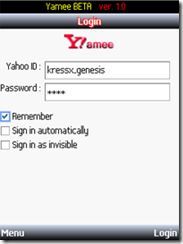Mempercepat SMTP respon :
secara standar , plesk pada OS freebsd sangat lambat pada saat menampilkan koneksi smtp. hal ini dikarenakan dilakukannya pengecekan reverse-dns lookup untuk alasan yg tidak penting. hal ini dapat menimbulkan terasa lambat pada saat mengirimkan email (default timeout reverse DNS lookup ialah 26 detik).
disable reverse DNS pada Plesk freebsd :
edit /etc/inetd.conf
| smtp stream tcp nowait root /usr/local/psa/qmail/bin/tcp-env tcp-env /usr/local/psa/qmail/bin/rblsmtpd -rbl.spamcop.net -r sbl.spamhaus.org –r zen.spamhaus.org /usr/local/psa/qmail/bin/relaylock /usr/local/psa/qmail/bin/qmail-smtpd /usr/local/ smtps stream tcp nowait root /usr/local/psa/qmail/bin/tcp-env tcp-env /usr/local/psa/qmail/bin/rblsmtpd -r bl.spamcop.net -r sbl.spamhaus.org -r zen.spamhaus.org /usr/local/psa/qmail/bin/relaylock /usr/local/psa/qmail/bin/qmail-smtpd /usr/local |
tambahkan –Rt0 setelah kata “tcp-env”
| smtp stream tcp nowait root /usr/local/psa/qmail/bin/tcp-env tcp-env -Rt0 /usr/local/psa/qmail/bin/rblsmtpd -rbl.spamcop.net -r sbl.spamhaus.org –r zen.spamhaus.org /usr/local/psa/qmail/bin/relaylock /usr/local/psa/qmail/bin/qmail-smtpd /usr/local/ smtps stream tcp nowait root /usr/local/psa/qmail/bin/tcp-env tcp-env -Rt0 /usr/local/psa/qmail/bin/rblsmtpd -r bl.spamcop.n |
